You’ve provided the perfect habitat, the right food, and the water parameters are spot on. Yet, your shrimp seem uninterested in breeding. What’s going wrong?
Shrimp breeding can be a complex issue, influenced by various factors such as water quality, diet, temperature, and even the age of the shrimp. Understanding and addressing these factors can lead to successful breeding.
Hey there, shrimpfam! My journey into shrimp breeding has been a rollercoaster of emotions, filled with both triumphs and tribulations. I remember the first time I noticed my shrimp weren’t breeding; it was like a punch to the gut. I had invested time, money, and endless love into creating the perfect environment for them.
Over several months, I battled with water parameters that seemed to have a mind of their own, dietary dilemmas that left me scratching my head, and temperature inconsistencies that would make anyone’s blood run cold (or hot, depending on the day). But with perseverance, research, and a little bit of luck, I managed to overcome these challenges.
Through trial and error, I discovered that even the smallest details could make a world of difference in the breeding success of my shrimp. From the type of substrate to the lighting schedule, every aspect required careful consideration.
How does pH affect shrimp breeding, and how can it be fixed?
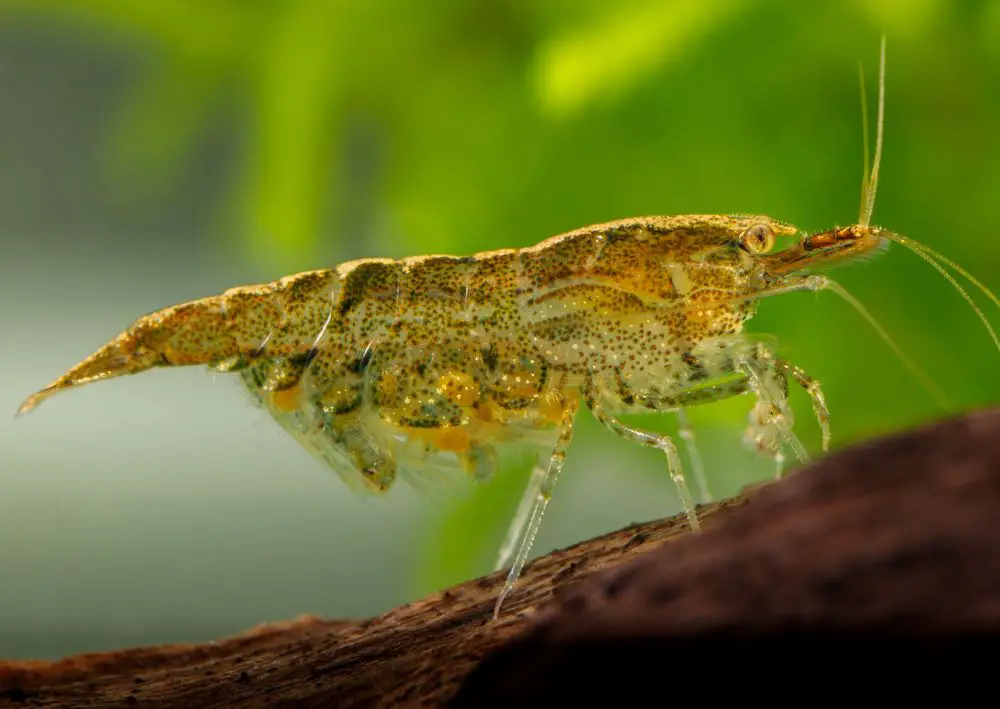
pH, or the measure of acidity or alkalinity in water, plays a vital role in shrimp breeding. It’s not just a number on a test kit; it’s a critical factor that can make or break your shrimp’s breeding success.
Shrimp species have specific pH preferences, and deviations from these optimal levels can lead to stress, poor health, and ultimately, a lack of breeding. If the pH is too low (acidic), it can cause the shrimp’s body to become more susceptible to diseases. On the other hand, if the pH is too high (alkaline), it can interfere with the shrimp’s ability to absorb essential minerals, leading to molting issues and hindering reproduction.
So, how can this be fixed? The key is to understand the pH requirements of your specific shrimp species and to monitor the pH levels regularly. Here’s a step-by-step guide to managing pH in a shrimp breeding tank:
- Identify the Optimal pH Range: Research the specific pH range that your shrimp species thrives in. This information can usually be found in shrimp-keeping guides or online forums.
- Test the pH Regularly: Using a reliable pH test kit, monitor the pH levels in your tank at least once a week. Regular testing helps you catch any significant changes early.
- Use the Right Substrate: Certain substrates can buffer the pH to keep it stable. For example, active substrates can lower pH, making them suitable for shrimp that prefer slightly acidic water.
- Avoid Overfeeding: Leftover food can decay and release substances that alter the pH. Feed your shrimp in controlled amounts and remove uneaten food promptly.
- Consider pH Adjusters if Necessary: If you need to make significant adjustments to the pH, there are commercial pH adjusters available. Use them cautiously and according to the instructions, as sudden changes can shock the shrimp.
- Monitor Other Water Parameters: pH doesn’t exist in isolation. Other factors like gH, kH, and temperature can influence pH, so keep an eye on these as well.
- Perform Regular Water Changes: Regular, small water changes with dechlorinated water that matches the tank’s pH can help maintain stability.
How can ammonia, nitrites, and nitrates impact shrimp breeding, and how can they be controlled?
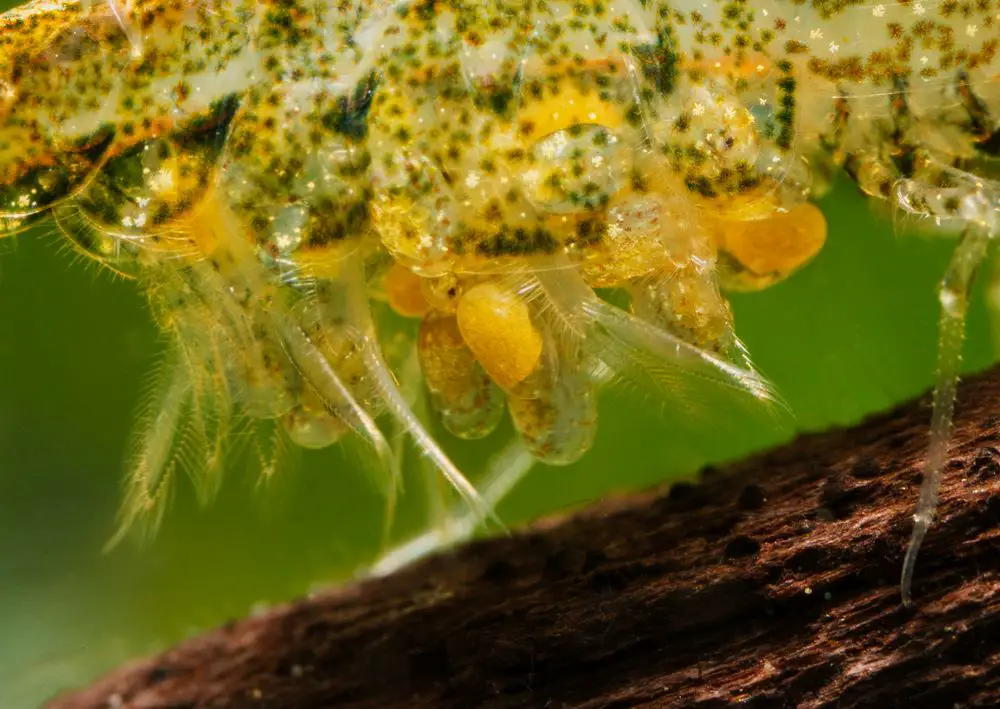
Ammonia, nitrites, and nitrates are three compounds that can profoundly impact shrimp breeding. Understanding their effects and how to control them is essential for anyone looking to breed shrimp successfully.
Ammonia’s Impact on Shrimp Breeding: Ammonia is a toxic compound that can quickly build up in a shrimp tank, especially if there’s overfeeding or decaying organic matter. Even at low levels, ammonia can cause stress, reduce immunity, and lead to death. In a breeding environment, ammonia can hinder mating behavior, reduce fertility, and even affect the development of eggs and shrimplets.
Nitrites’ Impact on Shrimp Breeding: Nitrites are another toxic compound that can be harmful to shrimp. They are usually formed from ammonia by beneficial bacteria. Like ammonia, nitrites can cause stress, reduce growth, and impair the shrimp’s ability to reproduce. High nitrite levels can lead to a condition known as “brown blood disease,” which can be fatal.
Nitrates’ Impact on Shrimp Breeding: Nitrates are less toxic than ammonia and nitrites but can still have negative effects on shrimp breeding if allowed to accumulate. High nitrate levels can lead to reduced growth, lower resistance to diseases, and a decrease in reproductive success.
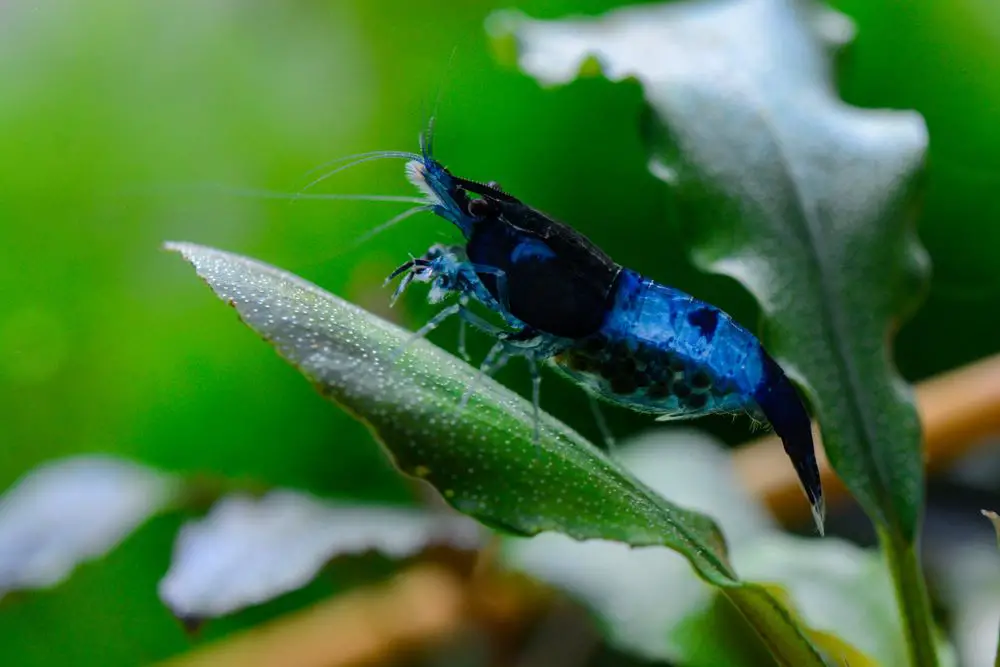
Controlling Ammonia, Nitrites, and Nitrates:
- Cycle the Tank Properly: Before introducing shrimp, make sure the tank is fully cycled. This process establishes beneficial bacteria that convert ammonia to nitrites and then to nitrates, reducing their toxicity.
- Regular Testing: Use a reliable test kit to monitor the levels of ammonia, nitrites, and nitrates. Regular testing allows you to detect any spikes and take corrective action promptly.
- Avoid Overfeeding: Overfeeding can lead to uneaten food decaying in the tank, releasing ammonia. Feed in small, controlled amounts and remove any leftovers.
- Perform Regular Water Changes: Regular water changes with dechlorinated water help dilute the concentrations of these compounds. Aim for small, frequent changes rather than large, infrequent ones.
- Use Live Plants: Live plants can absorb nitrates, helping to keep levels in check. Plants like Java Moss and Hornwort are popular choices among shrimp keepers.
- Maintain Proper Filtration: A well-maintained filter with biological media helps house the beneficial bacteria that break down ammonia and nitrites.
- Be Mindful of Tank Mates: Some fish and other creatures can produce more waste, leading to higher ammonia levels. Choose tank mates carefully and consider their impact on water quality.
- Use Ammonia Binders if Needed: In emergencies, ammonia-binding products can be used to detoxify ammonia temporarily. Follow the instructions carefully, as these are not long-term solutions.
How does temperature influence shrimp breeding, and what are the easy fixes?

Temperature is more than just a number on a thermometer in the world of shrimp breeding. It’s a vital factor that influences every aspect of shrimp life, from metabolism to molting, and of course, breeding. Let’s explore how temperature affects shrimp breeding and the easy fixes to ensure optimal conditions.
in the world of shrimp breeding. It’s a vital factor that influences every aspect of shrimp life, from metabolism to molting, and of course, breeding. Let’s explore how temperature affects shrimp breeding and the easy fixes to ensure optimal conditions.
Temperature’s Impact on Shrimp Breeding: Shrimp are ectothermic creatures, meaning their body temperature is determined by the surrounding environment. The temperature of the water directly influences their metabolic rate, growth, and reproductive cycles.
- Too Low Temperature: If the temperature is too low, the shrimp’s metabolism slows down. This sluggishness can lead to reduced feeding, slower growth, and a decrease in breeding activity. Eggs may take longer to hatch, and shrimplets may grow more slowly.
- Too High Temperature: Conversely, if the temperature is too high, the shrimp’s metabolism may speed up excessively. This can lead to increased stress, shorter lifespans, and a higher risk of diseases. While higher temperatures might initially boost breeding, it often leads to long-term problems and unsustainable breeding practices.
- Fluctuating Temperature: Rapid or frequent temperature changes can be particularly stressful for shrimp, leading to shock and even death. Stability is key for successful breeding.
Easy Fixes for Temperature Control:
- Know Your Shrimp’s Needs: Different shrimp species have different temperature preferences. Research the optimal temperature range for your specific shrimp and aim to keep the water within that range.
- Invest in a Quality HeaterIf Needed: A reliable aquarium heater with a thermostat can help maintain a stable temperature. Choose one that’s suitable for your tank size and follow the manufacturer’s instructions for placement and settings.
- Use a Thermometer: Regularly monitor the temperature with an accurate aquarium thermometer. Digital thermometers often provide more precise readings.
- Avoid Placing the Tank Near Heat Sources or Drafts: The location of the tank can influence its temperature. Keep it away from windows, radiators, air conditioners, or other sources that might cause fluctuations.
- Consider the Lighting: Some aquarium lights
 can generate heat. If you notice the temperature rising during the day, you may need to adjust the lighting duration or intensity.
can generate heat. If you notice the temperature rising during the day, you may need to adjust the lighting duration or intensity. - Perform Gradual Water Changes: When changing the water, make sure the new water is close to the tank’s temperature to avoid shocking the shrimp.
- Use Fans or Coolers if Needed: In hot weather, fans or aquarium coolers can help keep the temperature down. This is especially important if you’re keeping shrimp that prefer cooler temperatures.
How do gH & kH levels affect shrimp breeding, and how can they be adjusted?

In the world of shrimp keeping, gH (general hardness) and kH (carbonate hardness) are two essential water parameters that can significantly influence shrimp breeding. Understanding their roles and knowing how to adjust them can lead to a thriving shrimp colony.
gH’s Impact on Shrimp Breeding: General hardness (gH) measures the concentration of magnesium and calcium ions in the water. These minerals are vital for the shrimp’s overall health, affecting their exoskeleton development, molting process, and egg production.
- Low gH: Insufficient gH can lead to molting issues, as the shrimp struggle to form a proper exoskeleton. This can result in deformities, difficulty in mating, and even mortality.
- High gH: Excessive gH may lead to over-mineralization, causing the exoskeleton to become too rigid. This can hinder molting and reduce the shrimp’s ability to reproduce.
kH’s Impact on Shrimp Breeding: Carbonate hardness (kH) refers to the water’s buffering capacity, which helps stabilize the pH. While kH itself doesn’t directly affect shrimp breeding, its role in maintaining stable pH levels is crucial.
- Low kH: A low kH level can lead to rapid pH fluctuations, causing stress and negatively impacting breeding.(Dont worry about this if you have an active substrate, the acid is the buffer)
- High kH: Excessive kH may make it challenging to adjust the pH to the desired level, potentially leading to suboptimal breeding conditions.

Adjusting gH & kH Levels:
- Understand Your Shrimp’s Needs: Different shrimp species have specific gH and kH requirements. Research these needs and aim to maintain the water within those ranges.
- Test Regularly: Use reliable test kits to monitor gH and kH levels. Regular testing helps you detect any significant changes and take corrective action.
- Use the Right Water Source: Consider the gH and kH levels of your tap water
 or other water sources. RO (reverse osmosis) water allows you to start with a clean slate and add minerals as needed.
or other water sources. RO (reverse osmosis) water allows you to start with a clean slate and add minerals as needed. - Add Minerals if Needed: Commercially available mineral supplements can help you increase gH to the desired level. Follow the instructions carefully to avoid over-mineralization.
- Use Buffering Substrates for kH Control: Certain substrates can help buffer kH and maintain stable pH levels. Choose one that suits your shrimp’s needs.
- Perform Gradual Water Changes: When adjusting gH and kH, make gradual changes over time. Sudden shifts can shock the shrimp and hinder breeding.
- Avoid Overcomplicating Things: While gH and kH are essential, it’s crucial not to become overly fixated on achieving “perfect” numbers. Stability and consistency often matter more than hitting an exact target.
Why is tank size important for shrimp breeding, and what are the optimal sizes?
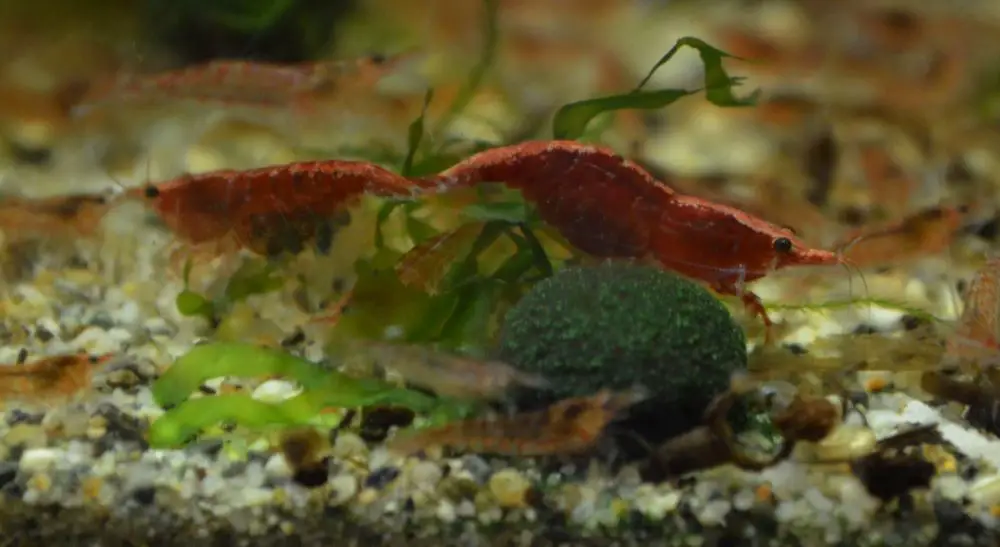
Tank size is often an overlooked aspect of shrimp breeding, but it plays a crucial role in determining the success of your shrimp colony. From providing enough space to ensuring stable water parameters, the size of the tank can make or break your shrimp breeding efforts.
Importance of Tank Size in Shrimp Breeding:
- Space for Movement and Growth: Shrimp need room to move, forage, and grow. A cramped tank can lead to stress, competition for food, and hindered growth, all of which can negatively impact breeding.
- Water Stability: Smaller tanks are more prone to rapid changes in water parameters like temperature, pH, and ammonia levels. These fluctuations can cause stress and affect breeding success.
- Molting and Mating Behavior: Shrimp require privacy and space to molt and mate. In a crowded tank, these natural behaviors can be disrupted, leading to reduced breeding.
- Shrimplet Survival: After breeding, the shrimplets need space to grow and thrive. A tank that’s too small may not provide enough hiding spots and food sources, leading to lower survival rates.
- Ease of Maintenance: A well-sized tank allows for easier maintenance, better filtration, and more effective water changes, contributing to a healthier environment for breeding.
Optimal Tank Sizes for Shrimp Breeding:
- Starter Tanks: For hobbyists starting with a small colony, a tank of 5 to 10 gallons can be suitable. This size provides enough space for a small number of shrimp to breed and grow but requires careful monitoring of water parameters.
- Medium-Sized Tanks: A 10 to 20-gallon tank offers more stability and room for a growing colony. It’s an excellent choice for those looking to expand their shrimp family without overwhelming themselves with maintenance.
- Larger Tanks: For serious shrimp breeders or those keeping multiple species, tanks of 20 gallons or more provide the space and flexibility needed for successful breeding. Larger tanks offer more stability and options for aquascaping, creating a more natural and enriching environment.
- Consider the Species: Different shrimp species may have specific space requirements. Research your chosen species to understand their needs and choose a tank size accordingly.
- Think About the Future: If you plan to expand your colony or add other tank inhabitants, consider choosing a slightly larger tank from the beginning. It’s easier to grow into a tank than to upgrade later.
The right tank size is not just a matter of aesthetics or convenience; it’s a fundamental aspect of successful shrimp breeding. By understanding the importance of tank size and choosing the optimal dimensions for your specific needs and goals, you can create a thriving environment where your shrimp can breed, grow, and flourish.
It’s not about going big or going home, but about finding the perfect balance that suits both you and your shrimp.
How do foods & additives impact shrimp breeding, and what are the best choices?
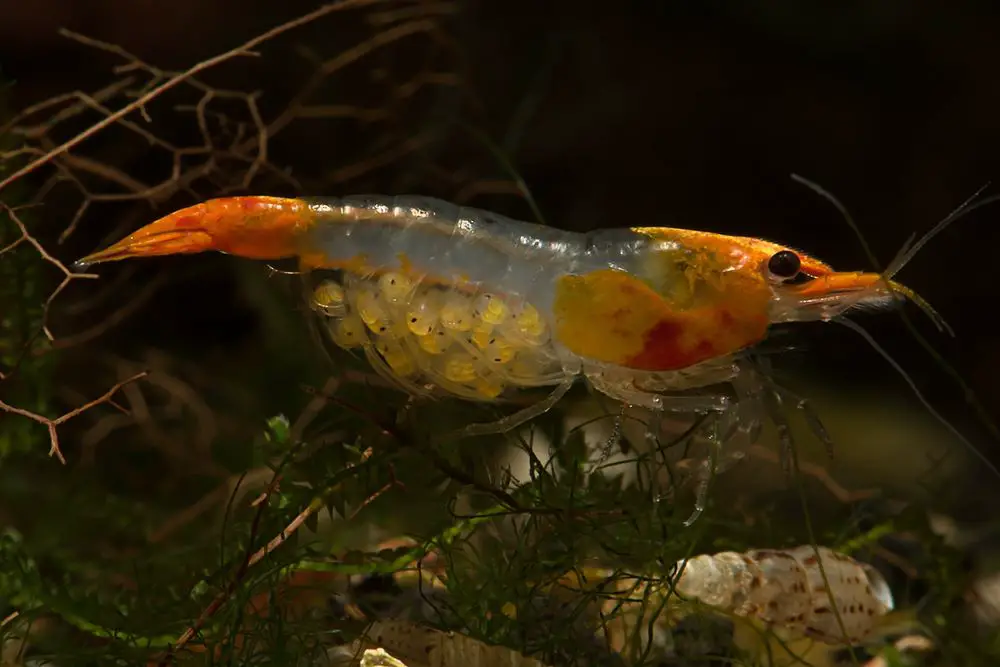
The saying “You are what you eat” rings true even in the shrimp world. The foods and additives you provide to your shrimp play a vital role in their overall health, growth, and breeding success. Let’s dive into how these nutritional choices impact shrimp breeding and explore the best options to nourish your shrimp family.
Impact of Foods & Additives on Shrimp Breeding:
- Nutritional Balance: Shrimp require a balanced diet rich in proteins, vitamins, minerals, and fibers to thrive. A well-rounded diet supports growth, molting, and reproductive health, leading to successful breeding.
- Influence on Egg Development: The right nutrients, especially proteins and minerals, are essential for egg development in female shrimp. A lack of proper nutrition can lead to fewer eggs, poor egg quality, and reduced hatching rates.
- Effect on Shrimplet Survival: Once the eggs hatch, the shrimplets need specific nutrients to grow and develop. Inadequate nutrition at this stage can lead to stunted growth and higher mortality rates.
- Potential Harm from Additives: Some commercial foods and additives may contain artificial colors, preservatives, or other chemicals that can be harmful to shrimp. These substances can cause stress, health issues, and negatively impact breeding.
Best Choices for Foods & Additives:
- High-Quality Commercial Foods: Look for shrimp-specific foods from reputable brands that list the ingredients and nutritional content. These foods are often formulated to provide a balanced diet that supports breeding.
- Natural Foods: Supplementing with natural foods like blanched vegetables, algae, and leaf litter can provide additional nutrients and variety. Spinach, zucchini, and Indian almond leaves
 are popular choices among shrimp keepers.
are popular choices among shrimp keepers. - Protein Sources: For breeding shrimp, consider adding occasional protein sources like bloodworms or brine shrimp. These can boost egg production and support shrimplet growth.
- Mineral Supplements: If your water lacks essential minerals, you may consider mineral supplements specifically designed for shrimp. These can support molting and egg development.
- Avoid Overfeeding: Overfeeding can lead to water quality issues and health problems. Provide small, controlled portions and observe how much your shrimp consume.
- Consider the Life Stage: Different life stages may require different nutritional needs. For example, shrimplets may benefit from specialized shrimplet food that’s easier to consume.
- Avoid Harmful Additives: Read labels carefully and avoid foods with artificial colors, preservatives, or other questionable ingredients.
The foods and additives you choose for your shrimp are not just a matter of taste; they’re foundational to the health and breeding success of your colony. By understanding the impact of nutrition on shrimp breeding and making thoughtful, informed choices, you can nourish your shrimp with love and science. It’s not about gourmet dining but about providing the building blocks of life that allow your shrimp to grow, breed, and thrive. Bon appétit.
What is the role of water changes in shrimp breeding, and how should they be done?

Water changes are a fundamental aspect of aquarium maintenance, and in the context of shrimp breeding, they take on even greater significance. Let’s explore the role of water changes in shrimp breeding and delve into the art and science of performing them effectively.
Role of Water Changes in Shrimp Breeding:
- Maintaining Water Quality: Regular water changes help remove waste products, excess nutrients, and potential toxins from the water. This ensures a clean and healthy environment that supports shrimp growth and breeding.
- Stabilizing Water Parameters: By replacing old water with fresh, dechlorinated water, you can help maintain stable levels of pH, gH, kH, and other essential parameters. Stability is key to reducing stress and promoting successful breeding.
- Encouraging Breeding Behavior: Some shrimp keepers have observed that water changes can stimulate breeding behavior. The influx of fresh water may mimic natural conditions that signal a favorable time for breeding.
- Preventing Disease: Regular water changes reduce the buildup of harmful substances that can lead to diseases. Healthy shrimp are more likely to breed successfully and produce healthy offspring.
How Water Changes Should Be Done:
- Know Your Water Source: Understand the parameters of your tap water or other water sources. If necessary, use RO water or conditioners to match the tank’s existing conditions.
- Frequency and Volume: Aim for regular, small water changes rather than large, infrequent ones. A common practice is changing 10-15% of the water weekly, but this can vary based on tank size, population, and specific needs.
- Temperature Matching: Ensure that the new water is close to the tank’s temperature to avoid shocking the shrimp.
- Avoid Overcleaning: While cleanliness is essential, overcleaning can disrupt beneficial bacteria and destabilize the tank. Focus on gentle, consistent maintenance.
- Monitor Water Parameters: Test the water parameters before and after water changes to ensure that you’re maintaining stability.
- Consider the Shrimp’s Behavior: Observe your shrimp during and after water changes. If you notice signs of stress or discomfort, you may need to adjust your approach.
- Use Proper Equipment: Use siphons, buckets, and other equipment specifically designated for the aquarium to prevent contamination.
Water changes are not just a chore; they’re a vital part of creating and maintaining an environment that supports shrimp breeding. By understanding the role of water changes and performing them with care and consideration, you can foster a thriving shrimp community that rewards you with the joy of new life. It’s not about simply swapping old water for new but about nurturing, balancing, and connecting with your aquatic world.
How does oxygen content affect shrimp breeding, and how can it be optimized?
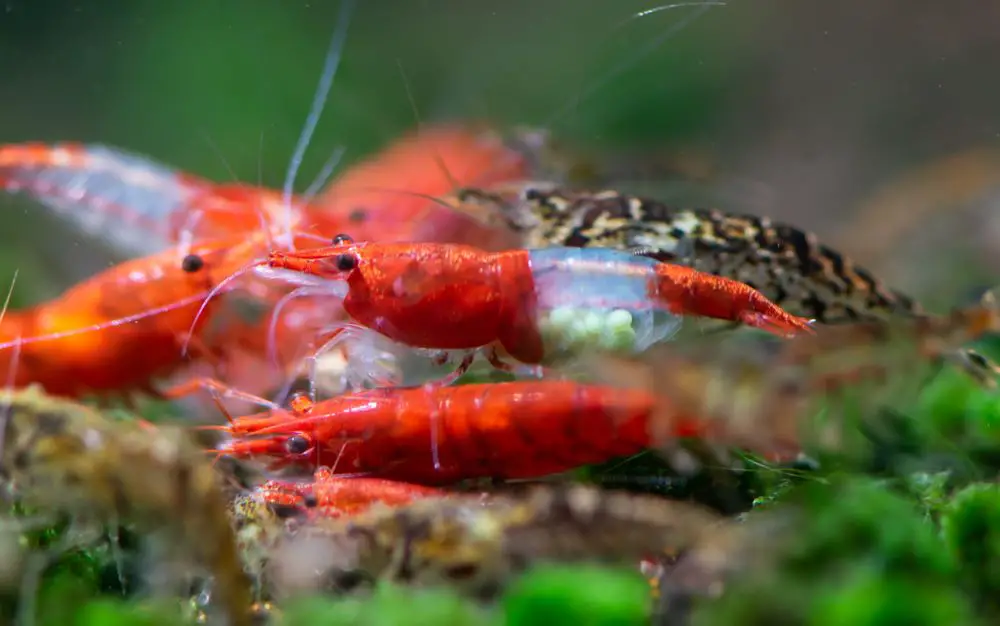
Oxygen content in the water is like the air we breathe; it’s essential for life but often taken for granted. In the context of shrimp breeding, oxygen plays a vital role that goes beyond mere survival. Let’s explore how oxygen content affects shrimp breeding and the ways to optimize it for a thriving shrimp colony.
Oxygen’s Impact on Shrimp Breeding:
- Supporting Metabolism: Shrimp, like all aquatic creatures, rely on dissolved oxygen in the water to breathe. Adequate oxygen levels support healthy metabolism, growth, and overall vitality, all of which contribute to successful breeding.
- Influence on Stress Levels: Low oxygen levels can lead to stress and discomfort in shrimp. Chronic stress can hinder mating behavior, reduce fertility, and negatively impact the development of eggs and shrimplets.
- Preventing Disease: Oxygen-rich water helps maintain a healthy immune system, reducing the risk of diseases that can affect breeding success.
- Enhancing Water Quality: Proper oxygenation helps break down waste products and supports beneficial bacteria in the tank. This contributes to clean, stable water conditions that promote breeding.
Optimizing Oxygen Content:
- Aeration: Using air stones, sponge filters, or other aeration devices helps increase the oxygen content in the water. The bubbles created by these devices increase the surface area of the water, allowing more oxygen to dissolve.
- Water Movement: Gentle water movement from filters or powerheads can improve oxygenation. The movement helps mix the water, ensuring that oxygen is evenly distributed throughout the tank.
- Live Plants: Aquatic plants produce oxygen during photosynthesis. Including live plants in the tank not only adds natural beauty but also contributes to oxygenation.
- Avoid Overcrowding: Too many shrimp or other tank inhabitants can deplete oxygen levels. Maintain a suitable population size to ensure that there’s enough oxygen for everyone.
- Regular Water Changes: Fresh, dechlorinated water typically contains more oxygen. Regular water changes help replenish oxygen levels and maintain overall water quality.
- Monitor Temperature: Oxygen solubility decreases as water temperature increases. Keep the water temperature within the optimal range for your shrimp species to ensure adequate oxygen levels.
- Consider Tank Design: A shallow tank with a larger surface area may allow for better oxygen exchange. If you have a deep tank, additional aeration might be necessary.
- Observe Your Shrimp: Watch for signs of oxygen deprivation, such as gasping at the surface or lethargy. These signs can indicate a need to adjust your oxygenation methods.
Oxygen content is not just a matter of bubbles and air stones; it’s a lifeline that supports every aspect of shrimp breeding. By understanding the importance of oxygen and taking thoughtful steps to optimize it, you can breathe life into your shrimp colony and enjoy the rewards of healthy, successful breeding.
It’s not about merely keeping the water bubbling but about nurturing, balancing, and creating an environment where your shrimp can truly thrive. Breathe easy, shrimpfam.
What are Planaria and Hydra, and how do they affect shrimp breeding?

Planaria and Hydra are two types of small aquatic organisms that can sometimes be found in shrimp tanks. While they may seem insignificant, their presence can have notable effects on shrimp breeding. Let’s explore what they are and how they can influence your shrimp colony.
Planaria: Planaria are flatworms that can be introduced into an aquarium through plants, substrate, or even water. They are often harmless to adult shrimp but can pose a threat to shrimplets.
- Impact on Shrimp Breeding: Planaria are known to prey on shrimp eggs and shrimplets. Their presence in a shrimp tank can lead to a decrease in the survival rate of the young, affecting the overall breeding success.
- Control Measures: If Planaria become a problem, reducing feeding and maintaining good tank hygiene can help control their numbers. There are also specific treatments available that target Planaria without harming shrimp.
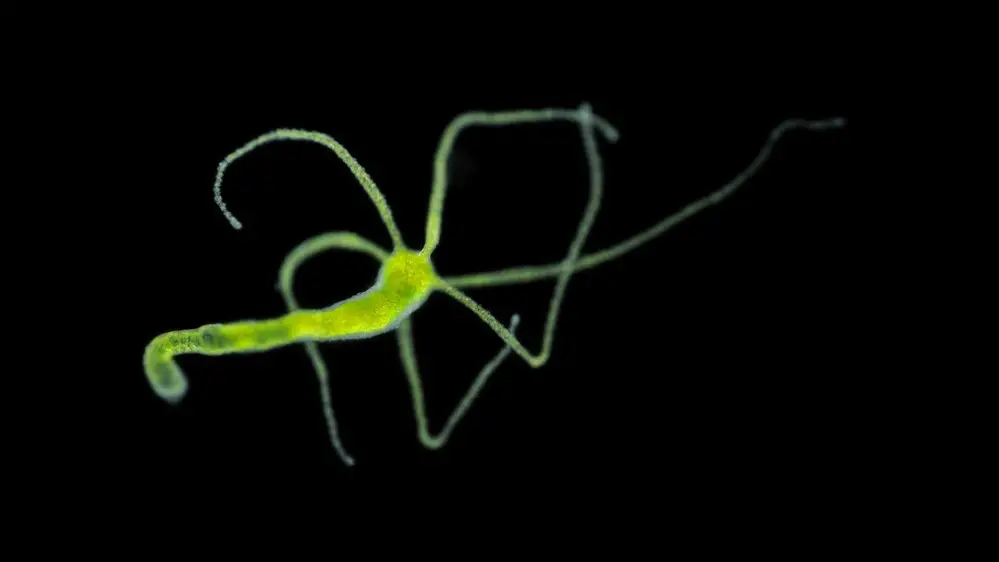
Hydra: Hydra are small, tentacled organisms that attach themselves to surfaces in the aquarium. They capture small prey, including shrimplets, with their stinging tentacles.
- Impact on Shrimp Breeding: Like Planaria, Hydra can prey on shrimplets, reducing their survival rate. They can also create a stressful environment for adult shrimp, potentially affecting breeding behavior.
- Control Measures: Controlling Hydra can be more challenging, but manual removal, reduced feeding, and careful use of specific treatments can help. Some shrimp keepers also use certain fish species that eat Hydra without harming shrimp.
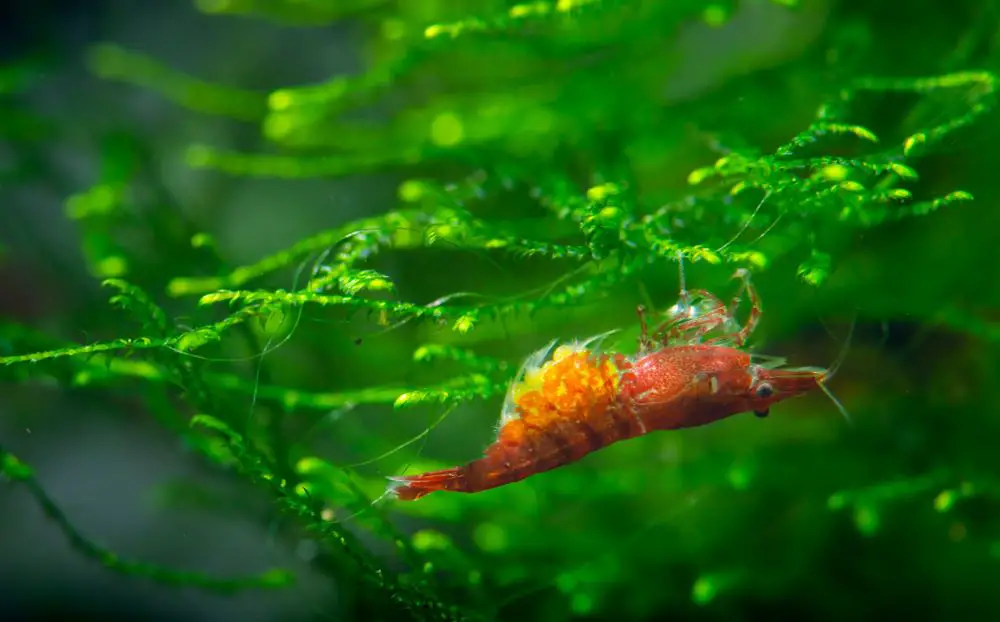
Conclusion: Shrimp Breeding Success
Shrimp breeding success hinges on a delicate balance of various factors, from water parameters like pH, gH, and kH to considerations like tank size, food choices, and oxygen content. Understanding and optimizing these elements can lead to a thriving shrimp colony that not only survives but flourishes.
Each aspect plays a unique role, and the art of shrimp breeding lies in harmonizing these factors to create a nurturing environment. Whether you’re a beginner or a seasoned shrimp keeper, these insights and practical tips can empower you to take your shrimp breeding to the next level.
Remember that shrimp keeping is a journey filled with learning, discovery, and joy. If you need any help or have questions along the way, please don’t hesitate to reach out. If you can’t find me here, check out aquarium shrimp keeping on Facebook.
Happy Shrimp Keeping, shrimpfam!

FAQ Section
Q. Why won’t my shrimp breed?
A. Shrimp may not breed due to various factors such as incorrect water parameters (pH, gH, kH), inadequate diet, stress, or unsuitable tank conditions. Identifying and addressing the specific issue can help encourage breeding.
Q. How do you encourage shrimp to breed?
A. Encouraging shrimp to breed involves providing optimal water conditions, a balanced diet, proper tank size, and a stress-free environment. Regular monitoring and adjustments as needed can foster successful breeding.
Q. Why is my shrimp not giving birth?
A. A shrimp may not give birth due to stress, poor water quality, or underlying health issues. Ensuring proper care, nutrition, and a stable environment can support the birthing process.
Q. What freshwater shrimp don’t breed?
A. Some species of freshwater shrimp, such as Amano shrimp, have complex breeding requirements that make breeding in a home aquarium challenging. They often require brackish water for the larvae to develop.
Q. Are shrimp hard to breed?
A. Shrimp breeding can be straightforward or challenging, depending on the species and the care provided. Understanding the specific needs of the shrimp and maintaining a suitable environment can make breeding more manageable.
Q. Will 5 shrimp breed?
A. Yes, a small group of 5 shrimp can breed, provided they include both males and females and are kept in appropriate conditions. However, a larger group may increase the chances of successful breeding.
Q. Do shrimp breed easily?
A. Some shrimp species, such as Cherry shrimp, breed easily in proper conditions. Others may have more specific requirements. Knowledge, observation, and care are key to successful breeding.
Q. Do shrimp need light to breed?
A. Shrimp do not specifically need light to breed, but a consistent light-dark cycle can support their natural behavior and overall well-being, indirectly aiding in breeding success.
